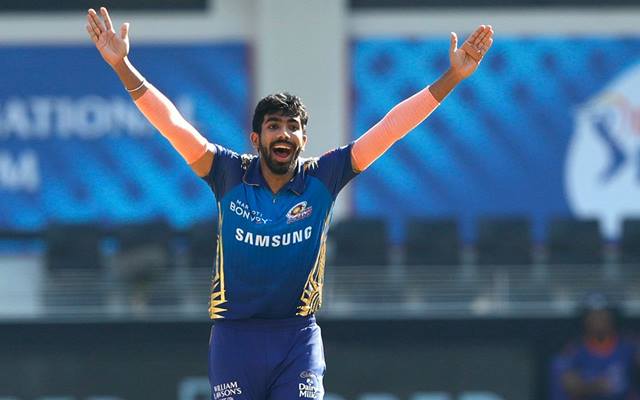T20 cricket is now watched eagerly across the globe as the shortest format has generated a lot of interest. The game of cricket has evolved vastly over the years. There was a time when 5 days of Test cricket was probably the only thing that happened. Then came the 50 overs ODI and the 20 overs T20I format which made the cricket on-lookers experience the fresh breeze blowing. With the inception of T20 cricket, the game became even more athletic.
T20 cricket made people ponder then so as to how cricket can be played in such a short span of 20 overs. But then came the T10 league that further shortened the format. With T20s, the approach of the game witnessed a shift. The batters came in with innovative shots whereas bowlers introduced more variations. The Hundred (100 balls) and T10 leagues (10 overs) have generated a lot of interest but T20s were the first thing that saw edge-of-the-seat thrillers and generated revenues.
The IPL further garnered the audacity of the T20 cricket format as its pace and entertainment fetched in a large chunk of the audience to watch the games. It is probably the most celebrated format now with fans yearning to watch the action unfold. But T20 cricket can be more interesting if some rules are changed.

T20 Cricket: 5 New Rules Which Can Make T20s More Interesting
1. 8 runs for sixes over 100 meters

The T20 cricket matches carry a tag of being entertaining and full of action-packed performances. With the likes of power hitters like Chris Gayle, Andre Russell, AB de Villiers to name a few, big hits are always in the scenario. Often the power that these players generate whilst hitting the shots leaves many in awe of their strength.
Big sixes aren’t a rare sight in T20 cricket and often the ball is out of the stadium. So the thought of rewarding the batters with much more than just 6 runs for their effort of hitting it big will do wonders to the individual player and team. Hitting the ball over 100 meters requires immense strength in T20 cricket and the ones who can do it must be provided with some advantage. So giving eight runs instead of six to a maximum that goes over 100 meters could be a new rule that adds to the fascination of the T20 cricket format.
Maybe one can think of bringing it in the franchise leagues in the first place. If that happens, the team with hard hitters will benefit. It will take the target of the side to an even more challenging total for the opposition to chase. In case the team batting first had struggled initially to get in runs, if their attacking batters are able to send the ball out of the stands it might help the team to chip in some necessary runs.
2. More Than 4 Overs For A Bowler

The format is shorter but it demands the players to challenge themselves even more. By tuning out all the distractions, they have to find the shelf of possibilities to take the team past the total or put a commanding target on board. It thus becomes the game of calculation, wherein the batters decide their targets.
They play out the tough bowlers and then design their approach in such a way that they then take on the part-timers and the less fancied ones. A batter has the opportunity to play an entire inning when in form, but when it comes to the bowlers, they have just four overs to bowl.
However, a tweak in the quota of the bowlers can be made. If the number of overs is increased, the bowler who is having a good day will make most of it and the team will be gifted with more important breakthroughs. This will scrape off the tension of the skipper in case one of his prime bowlers is having a bad day.
The batters will then have to face more balls from the lethal in form bowlers and that would test their abilities in T20 cricket. This move can provide more challenges to the batters and will produce furthermore compelling contests for the fans. The batsman will have to go big against the prime bowlers and that would exude more competition and build excitement around the matches.
Bowlers like pacer Jasprit Bumrah of Mumbai Indians or spinner Rashid Khan of Sunrisers Hyderabad can bowl more than 4 overs if this rule comes to effect in T20 cricket thus worrying the opposition.
3. Player Replacement In The 2nd Half Of T20s

This rule was brought in by Cricket Australia in the recent edition of the Big Bash League. As per the rule, the teams will be allowed to make use of one ‘X’ factor player after the 10th over of the ongoing match.
The ‘X’ factor player can only replace a player who hasn’t been quite active in the game. Thus, on the batting side, he can replace a batter who hasn’t taken the charge of the field. And from the bowling side, the replacement will come for a bowler who hasn’t bowled more than an over. If this rule is considered in the bigger picture, it might sometimes change the fortunes of the game upside down.
For instance, after playing a few overs on the field, if the team realizes that a certain player who isn’t in the playing XI can be crucial whilst the conditions, they can rope in him. It takes no time for the game to turn around completely in T20 cricket. The substitution of the player at times can have an immediate impact on the game.
If the team is in trouble they can get in an extra batsman and put a respectable total on the board. On the other hand, with the bowlers, it will provide an extra option for the side. The teams will have the opportunity to bring in an extra spinner or pacer depending on the surface and the condition. The anticipation that the substitute will bring on the 22 yards will keep the fans etched to the match to see if he changes the things around.
Super Substitute was a rule that was in existence in 2005, for ODI cricket but was scrapped within a year of its introduction. So, this rule says that a team can select a player and nominate him as the SuperSub before the toss. And, during the game, they can substitute the Super Sub, with another player in the playing XI.
4. 5 Penalty Runs For Slow Over Rate

There have been talks on the issue of slow over-rate since always. To complete the innings in the fixed time is what is expected of the teams. Often it doesn’t go that way as the teams exceed the time and are then fined for the same in T20 cricket. But imposing fines on the cricketers particularly captains necessarily doesn’t solve the concern.
Instead, if 5 penalty runs are added to the opposing team’s total, then it might create a greater impact and a convincing solution. In the shorter format, even a single run can decide the outcome of the match. The teams strive hard on the field to save runs. Probably a run saved in the T20 cricket format is a run scored. And thus if this ruling comes to the forefront, the teams will put their thinking hats on the seriousness of following the time.
This will make the teams more conscious about the pre-set marks and they might follow them more effectively. A fine might not hurt the players the way these penalty runs would. It can then go on to affect the match’s outcome.
An over rate in cricket is generally defined as the number of overs bowled in an hour (60 minutes). In the general run of things, an over-rate in the range of 13-15 is considered to be an apt one for it allows the match to move at a fast pace. To further curb fielding captains regarding over rates, the authorities have reduced the mandatory time of completing an IPL inning to 90 minutes in IPL 2021.
Therefore, starting from tonight in IPL 2021, fielding captains will have to ensure that they bowl their 20 overs within a 90-minute period. Technically, the time for a fielding side to bowl 20 overs in 85 minutes as an IPL innings comprises a couple of strategic timeouts (combined duration of five minutes).
5. The Golden Over
![T20 Cricket: 5 New Rules Which Can Make T20S More Interesting 7 AB de Villiers played an unbeaten 75-run knock against the Delhi Capitals [P/C: iplt20.com]](https://sportzwiki.com/wp-content/uploads/2021/05/e0478-16211389938181-800.jpg)
If one aims to add even more thrill to the T20 cricket, another rule that probably sneaks in is the golden over. Under this, the team can avail one over from the match wherein the runs scored in that particular over will count double, including the extras. The batting team will have to decide on that over before their innings start.
This creates a lot more enthusiasm as the fans will probably be waiting for that over to start. The batting team will have an unsaid pressure of delivering in this over. The over will be of utmost importance as if the side is able to smash big and pile up good runs, it will take them in a better position in the match. It would equally be challenging as well because the opposition will make sure that their best bowler takes the run-up in this case.
This tussle between the two teams in T20 cricket might produce a good fight as both sides will be keen on seizing the moment. If it is in the case of a chase, the batters on the field can calculate their innings and think of fetching in maximum runs from the over as it will get doubled.
In the T20 cricket matches where a single delivery changes the fate of the game, a Golden Over can pretty much do wonders by further increasing the anticipation of the fans. In franchise cricket leagues which attracts a lot of audiences already, such a ruling can add to the plethora of anticipation of the leagues.
In a first for a major T20 cricket competition, the Big Bash League introduced three major rule changes in the 2020/21 season: the Power Surge (the usual six-over powerplay split into four overs at the start of an innings and a floating block of two for the batting team to call in the second half of the innings), the Bash Boost (a bonus point for the team with the higher ten-over score) and X-factor replacements (the option to bring in a substitute player after ten overs of the match).
![T20 Cricket: 5 New Rules Which Can Make T20S More Interesting 1 IPL 2021 will is scheduled from April 9 to May 30 [Credits: IPL]](https://sportzwiki.com/wp-content/uploads/2021/03/3b43e-16155495417112-800.jpg)